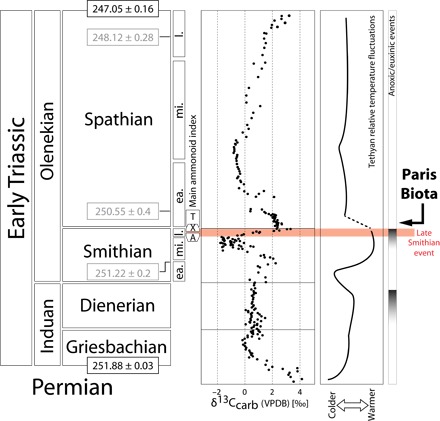Fig. 1. Chronostratigraphic subdivisions of the Early Triassic [radiometric ages from studies by Galfetti et al. (5), Ovtcharova et al. (47), Ovtcharova et al. (48), and Burgess et al. (49)] with simplified global geochemical trends [δ13Ccarb data from Galfetti et al. (5); anoxic episodes modified following studies by Grasby et al. (6), Galfetti et al. (50), Ware et al. (51), and Hermann et al. (52)] and the relative temperature fluctuations in the Tethyan realm [adapted from studies by Sun et al. (2) and Romano et al. (3)].

Subdivisions of the Smithian and Spathian follow the ammonoid zonation from studies by Brühwiler et al. (53) and Guex et al. (54). The late Smithian extinction event is highlighted in red. Time correlations for the late Smithian and the Smithian-Spathian boundary are based on high-resolution ammonoid zonations (20, 55, 56). A, Anasibirites beds; X, Xenoceltitidae beds (both late Smithian); T, Tirolites beds (early Spathian); ea., early; mi., middle; l., late; VPBD, Vienna Pee Dee belemnite.
